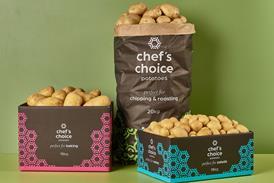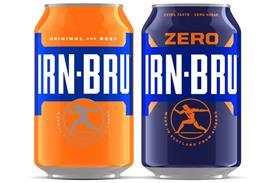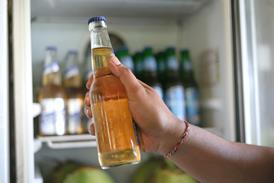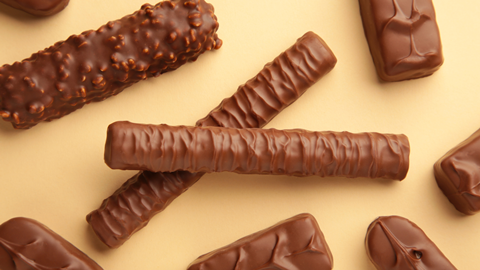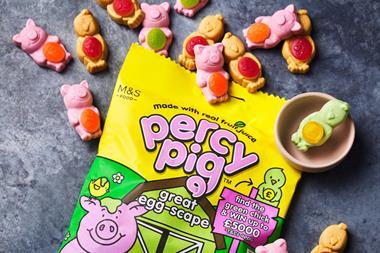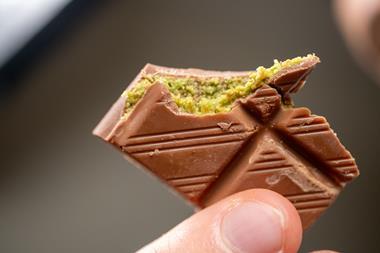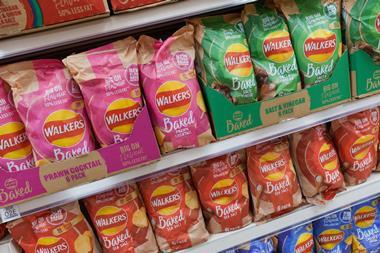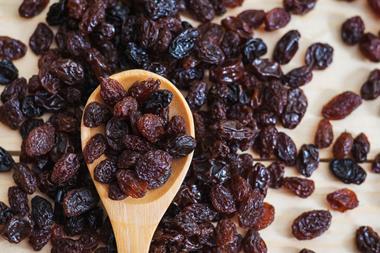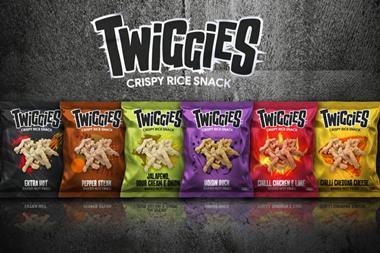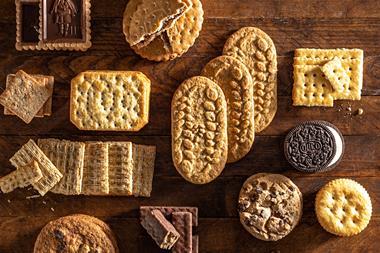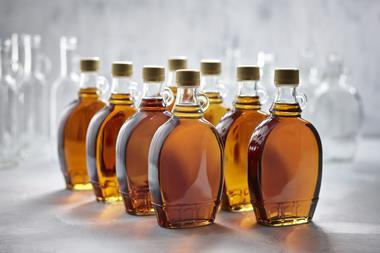With consumers broadening their definition of what constitutes a snack and with the snacking category’s boundaries blurring, well-known brands and retailers are having to rethink how they approach the sector – and what might constitute a successful snack brand of the future.
One of the most exciting aspects of FMCG is the pace at which it evolves. Category landscapes change so rapidly that those from a few years ago can now seem unrecognisable.
The snacking category embodies this rapid pace but also tells a unique story, with traditional boundaries blurring like no other category. In just a few years, it has been reshaped by shifting consumer habits, the rise of lifestyle-driven choices, and an explosion of options across the aisles.
These shifts have undoubtedly brought challenges, but also opportunities, as confectionery brands adapt to the evolving snacking category. Strategies now centre on innovative NPD that meets consumers’ demand for functional benefits, on-the-go convenience, and formats such as resealable packs and bite-sized options. At the same time, brands are embracing redefined market approaches that enable them to participate across a wide spectrum of snacking occasions – from everyday value to moments of luxurious indulgence.

“In the past, chocolate, biscuits, nuts and cereal bars each occupied their own clearly defined spaces, with shoppers operating within familiar category boundaries. Today, those boundaries have dissolved”
– Matt Boulter, UK & Ireland sales director, Mars Wrigley
Broadening snacking moments
Looking back only five years, the snacking market bears little resemblance to the one shopped today. Consumers are not only snacking more frequently but are also broadening their definition of what counts as a snack. The traditional boundaries between confectionery, sweets, biscuits, nuts, and crisps, for example, are blurring as shoppers increasingly think in terms of ‘snacks’ rather than strict product types.
Matt Boulter, UK & Ireland sales director at Mars Wrigley says: “In the past, chocolate, biscuits, nuts and cereal bars each occupied their own clearly defined spaces, with shoppers operating within familiar category boundaries. Today, those boundaries have dissolved. Consumers no longer think, ’I’m buying chocolate‘; they think, ’I fancy a snack’. Crucially, the definition of what constitutes a snack has evolved. Where once it meant confectionery, it could now just as easily be a cereal bar, a milkshake, a high-protein snack, or even a savoury impulse option.”
This subtle but significant shift means confectionery brands are no longer only competing with direct category rivals, but with a much larger product portfolio, all of which serve the same emotional need: delivering a moment of indulgence, enjoyment, reward or functional benefit. To succeed, brands need to recognise that snacking is no longer category-specific – it’s about owning the modern snack occasion.
Cross-category opportunity
The expanding definition of snacking has made the competitive landscape more complex, with brands competing not only within their traditional categories but across the entire snacking spectrum.
Shoppers now consider one type of snack alongside another – whether a chocolate bar, a brownie, or a peanut butter protein bite, fruity confectionery or a milk-based drink. The challenge for brands is to ensure they are part of that mental shortlist, regardless of how or where the product is cited.
Boulter continues: “By recognising that consumers are driven by emotions and moments, rather than rigid category boundaries, brands are tailoring their offerings to match specific occasions, moods and lifestyles. This is taking the shape of smaller individual formats, such as snack packs for on-the-go, which facilitate quick indulgences, creating functional options as well as premium treats across the snacking occasions.”
Brands are also experimenting with cross-category innovations, seasonal and limited-edition products. By aligning products with the moods, needs and lifestyles of consumers, brands can meet demand across more occasions, formats and channels than ever before.
“While indulgence remains central, snacks today are expected to do more than simply satisfy a sweet tooth. Functional benefits are rising in importance”
It’s not just a taste test
Modern consumers expect more from their snacks than taste and indulgence. There’s a growing demand for functional benefits, with protein-enriched products, added fibre and fortified options leading the way. Shoppers are increasingly looking for snacks that contribute to their nutritional goals while still delivering enjoyment, turning snacking into an opportunity to combine pleasure with purpose.
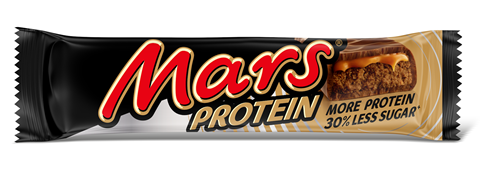
While indulgence remains central – it’s why people treat themselves – snacks today are expected to do more than simply satisfy a sweet tooth. Functional benefits are rising in importance, and consumers want options that support functionality, whether that means boosting energy, aiding recovery, or providing a feeling of satiety, all without compromising on taste or experience.
For brands, this means complementing consumer favourites with innovations that layer in functional attributes. Smaller options, protein-enriched bars, and hybrid formats allow consumers to satisfy cravings while meeting lifestyle or dietary goals.
The focus isn’t on replacing classics, but on offering new choices for emerging occasions and needs, from on-the-go energy boosts to mindful indulgence. By aligning products with these evolving consumer priorities, brands can meet demand across a wider spectrum of occasions, formats and channels, ensuring snacks remain relevant in a fast-moving, competitive market.
Consumers are choosing snacks not categories
“As brands navigate shifting consumer needs, the key to success lies in understanding that shoppers are choosing snacks, not categories,” says Boulter. “Heritage brands such as Mars Wrigley can carry enormous trust and emotional connection with consumers, assets that are invaluable in a noisy marketplace.” By leveraging this trust while innovating into adjacent spaces, brands can combine the best of both worlds – the reassurance of familiarity and the excitement of something new.
At the heart of Mars Wrigley’s approach is one core principle – consumers are making snack decisions, not category decisions. In the split-second moment at the shelf or while scrolling an online basket, the question is simply, ’what do I feel like now?’ By positioning its brands to answer that question across indulgent and functional needs, solo and sharing moments, impulse and planned purchases, Mars Wrigley is building the flexibility and breadth needed to thrive in the new snacking world.
“Multi-textured formats are increasingly appearing where they weren’t traditionally found”
As a result, reduced-sugar options, protein-enriched products, and other fortified snacks are gaining traction, and Mars Wrigley is meeting this demand head-on. Mars and Snickers protein bars, for example, offer taste-driven, fortified options with 40% and 30% less sugar respectively, combining enjoyment with purpose and satisfying both indulgent and functional needs.
Driving growth
This shift in consumer expectation also highlights the trend of blurring category boundaries. Multi-textured formats are increasingly appearing where they weren’t traditionally found, with chocolate wafers incorporated into confectionery mashups making up 20% of the chocolate bars category and growing 10% year on year [Barry].
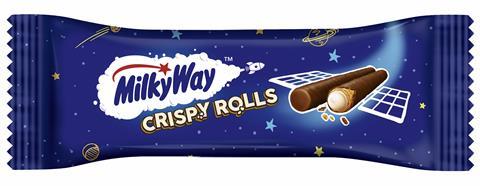
For example, Mars Wrigley’s Crispy Rolls capitalise on this shift, combining crunch and creaminess in ways that excite shoppers while building on the familiarity of iconic brands. Retailers can amplify these innovations through eye-catching displays, sampling and storytelling to engage consumers and drive sales.
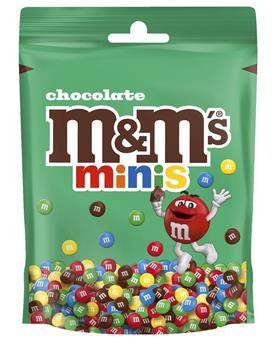
Format innovation continues to drive growth, particularly as consumers seek shareable moments at home. Bite-sized portions, multipack options, and chocolate blocks meet these needs while creating new consumption occasions. Mars Wrigley’s 2024 launch of M&M’s Minis, available in multiple pack sizes, taps into screentime snacking, baking, and decorating occasions, while also recruiting younger consumers into the sub-category. With a 42% market share [Nielsen], Mars Wrigley demonstrates how combining familiarity with relevant new formats strengthens category leadership while responding to evolving consumer needs.
And it’s this familiarity that continues to drive growth, says Boulter. “Our core brands such as Mars, Twix, Snickers, Maltesers and M&M’s are household staples, offering consumers not just a sweet treat but also a sense of comfort, nostalgia and reliability in an increasingly fragmented snacking market. Their consistent presence on shelves demonstrates that, even as new formats and innovations emerge, shoppers continue to reach for the names and formats they know and trust.”
At the same time, this strong core business provides the platform and the consumer trust that allows Mars Wrigley to experiment, diversify and expand into new snacking spaces without losing its foundation in familiarity.
For more information or to contact us visit https://www.mars.com/en-gb


